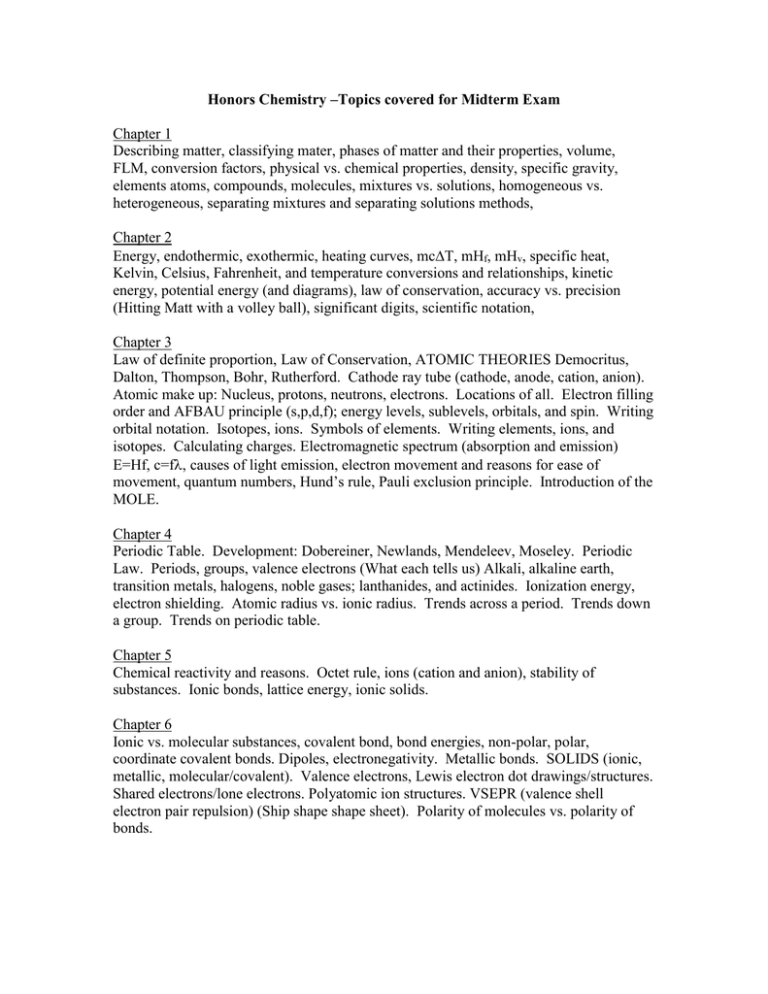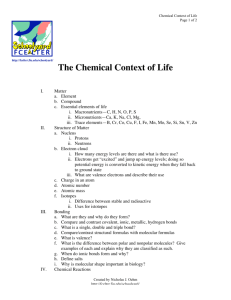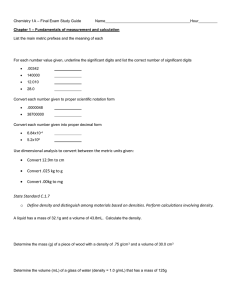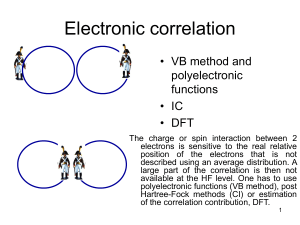Midterm Review LIST OF TOPIC covered
advertisement

Honors Chemistry –Topics covered for Midterm Exam Chapter 1 Describing matter, classifying mater, phases of matter and their properties, volume, FLM, conversion factors, physical vs. chemical properties, density, specific gravity, elements atoms, compounds, molecules, mixtures vs. solutions, homogeneous vs. heterogeneous, separating mixtures and separating solutions methods, Chapter 2 Energy, endothermic, exothermic, heating curves, mcT, mHf, mHv, specific heat, Kelvin, Celsius, Fahrenheit, and temperature conversions and relationships, kinetic energy, potential energy (and diagrams), law of conservation, accuracy vs. precision (Hitting Matt with a volley ball), significant digits, scientific notation, Chapter 3 Law of definite proportion, Law of Conservation, ATOMIC THEORIES Democritus, Dalton, Thompson, Bohr, Rutherford. Cathode ray tube (cathode, anode, cation, anion). Atomic make up: Nucleus, protons, neutrons, electrons. Locations of all. Electron filling order and AFBAU principle (s,p,d,f); energy levels, sublevels, orbitals, and spin. Writing orbital notation. Isotopes, ions. Symbols of elements. Writing elements, ions, and isotopes. Calculating charges. Electromagnetic spectrum (absorption and emission) E=Hf, c=fcauses of light emission, electron movement and reasons for ease of movement, quantum numbers, Hund’s rule, Pauli exclusion principle. Introduction of the MOLE. Chapter 4 Periodic Table. Development: Dobereiner, Newlands, Mendeleev, Moseley. Periodic Law. Periods, groups, valence electrons (What each tells us) Alkali, alkaline earth, transition metals, halogens, noble gases; lanthanides, and actinides. Ionization energy, electron shielding. Atomic radius vs. ionic radius. Trends across a period. Trends down a group. Trends on periodic table. Chapter 5 Chemical reactivity and reasons. Octet rule, ions (cation and anion), stability of substances. Ionic bonds, lattice energy, ionic solids. Chapter 6 Ionic vs. molecular substances, covalent bond, bond energies, non-polar, polar, coordinate covalent bonds. Dipoles, electronegativity. Metallic bonds. SOLIDS (ionic, metallic, molecular/covalent). Valence electrons, Lewis electron dot drawings/structures. Shared electrons/lone electrons. Polyatomic ion structures. VSEPR (valence shell electron pair repulsion) (Ship shape shape sheet). Polarity of molecules vs. polarity of bonds. Chapter 7 Molecular weight/ molar mass (from PT), mole conversions to atoms of an element, molecules of a compound, liters of a gas. Avogadro’s number (6.023 x 1023) . Average atomic mass (weighted average of all the naturally occurring isotopes). Writing formulas (criss cross oxidation #’s) of compounds. Stock system when needed (if 1st element has >1 position ox#). Naming acids and bases. Percent composition. Empirical vs. molecular formulas. Calculating empirical formulas from masses and %. Calculating molecular formulas from empirical formulas. Chapter 8 Chemical reactions. Reactants vs. products. Synthesis, decomposition, single replacement (and table J activity series) double replacement, combustion (types of reactions). Chapter 9 Stoichiometry … mole math of balanced chemical equations. Limiting reagents/reactants. % error vs. % yield. Chapter 10 Thermodynamics and Calorimetry. Review heating curves mcT, mHf, mHv, specific heat. Specific heat vs. molar heat capacity. Enthalpy (H), Entropy (G), Gibbs Free Energy (G). Calculations and relationships. Factors that affect spontaneity of equations based on entropy, enthalpy and Gibbs free energy (endothermic and exothermic). Hess’s Law calculations with a series of equations. Chapter 11 Change of state. Melting, freezing (change in PE only). MP, FP, sublimation. Condensation, vaporization. Vaporization vs. evaporation. IMF (Intermolecular forces) … just what we did so far on IMF



